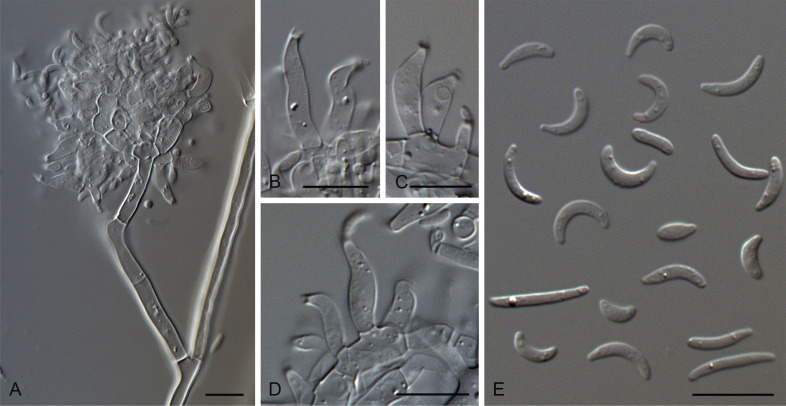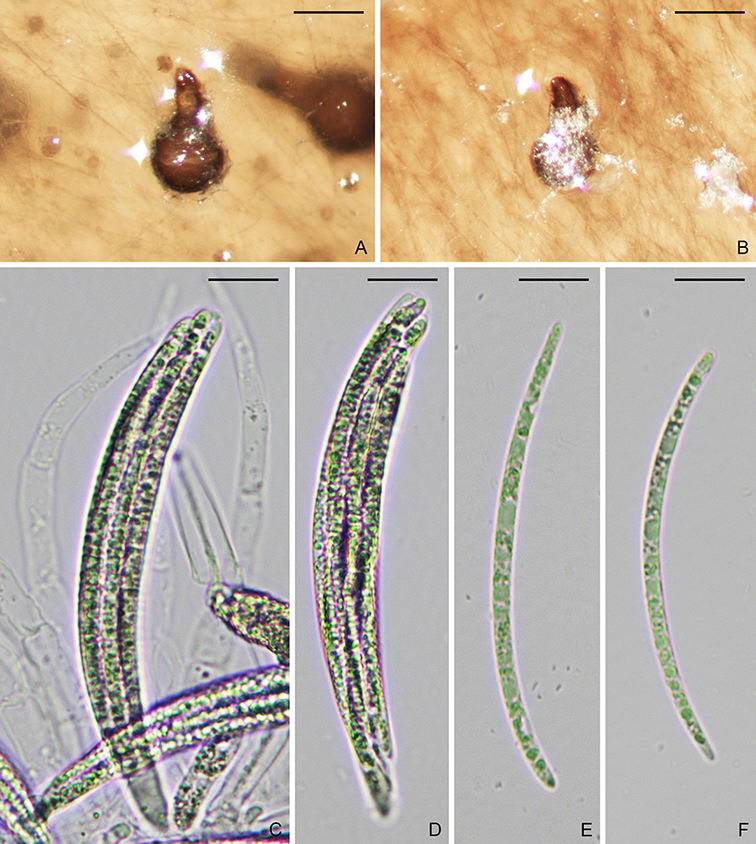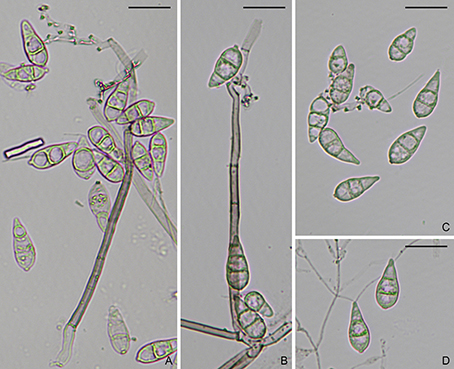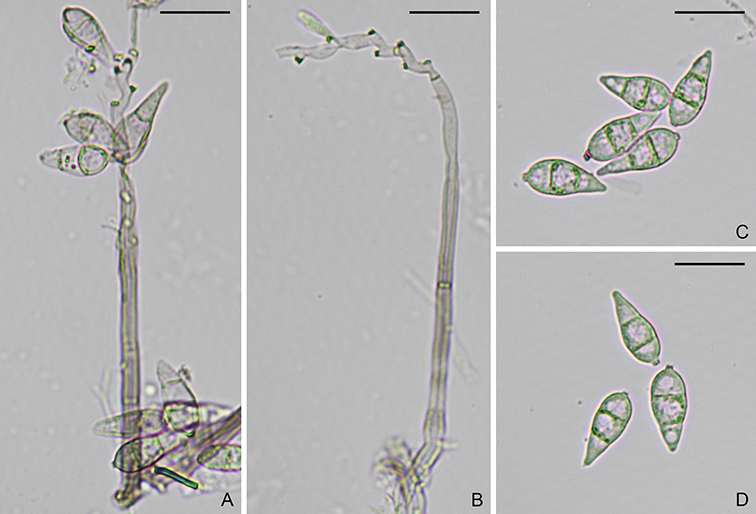Gaeumannomyces walkeri Hern.-Restr. & Crous, Stud. Mycol. 83: 45 (2016).
MycoBank: MB816901.
Asexual state phialophora-like. On MEA, hyphae branched, septate, hyaline to red brown, smooth, 1–4.5 μm diam. Conidiophores branched, verticillate, hyaline. Conidiogenous cells phialidic, terminal to intercalary, cylindrical to lageniform, straight or curved, hyaline to light brown, 6–23 × 2–3.5 μm, with a cylindrical, refractive collarette, up to 2.5 μm long, 1–2.5 μm wide. Conidia initially fusiform, 7.5–11 × 2–3 μm, becoming lunate, slightly to strongly curved, allantoid to fusiform, sinuous, hyaline, 5–14 × 1–1.5 μm. Hyphopodia lobed, brown, 20–31 × 18.5–24.5 μm. Sexual state unknown.
Colonies on PDA 6.5 cm diam after 7 days at 25 °C; surface flat; aerial mycelium scarce, pale olivaceous in center, colorless to periphery; margin diffuse; reverse pale olivaceous. Colonies on MEA 7 cm diam after 7 days at 25 °C; surface cottony; aerial mycelium abundant, funiculose white; margin uneven; reverse umber, darker in center. Colonies on OA 6 cm diam after 7 days at 25 °C; surface cottony; aerial mycelium moderate, white; submerged mycelium grey olivaceous; reverse isabelline (Description from Hernández-Restrepo et al., 2016).
Typification: Holotype CBSH-22586. Ex-holotype culture CBS141400 (CPC26028, FL156).
Gene sequences: KX306543 (ITS), KX306613 (28S), KX306670 (RPB1), KX306746 (TEF1).
Hosts/substrates: On Stenotaphrum secundatum (Poaceae).
Distribution: USA.
Copyright 2022 by The American Phytopathological Society. Reproduced, by permission, from Luo, J., and Zhang, N. 2022. The Rice Blast Fungus and Allied Species: A Monograph of the Fungal Order Magnaporthales (https://my.apsnet.org/APSStore/Product-Detail.aspx?WebsiteKey=2661527A-8D44-496C-A730-8CFEB6239BE7&iProductCode=46826). American Phytopathological Society, St. Paul, MN.





